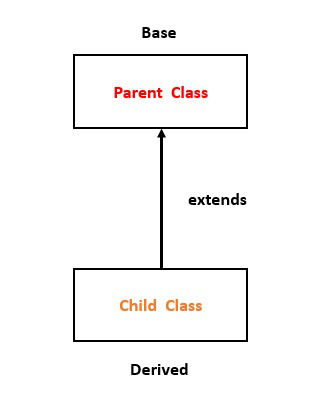Inheritance and Composition in Python
Last Updated :
01 Oct, 2020
Prerequisite – Classes and Objects in Python
This article will compare and highlight the features of is-a relation and has-a relation in Python.
What is Inheritance (Is-A Relation)?
It is a concept of Object-Oriented Programming. Inheritance is a mechanism that allows us to inherit all the properties from another class. The class from which the properties and functionalities are utilized is called the parent class (also called as Base Class). The class which uses the properties from another class is called as Child Class (also known as Derived class). Inheritance is also called an Is-A Relation.

Inheritance – diagrammatic representation
In the figure above, classes are represented as boxes. The inheritance relationship is represented by an arrow pointing from Derived Class(Child Class) to Base Class(Parent Class). The extends keyword denotes that the Child Class is inherited or derived from Parent Class.
Syntax :
# Parent class
class Parent :
# Constructor
# Variables of Parent class
# Methods
...
...
# Child class inheriting Parent class
class Child(Parent) :
# constructor of child class
# variables of child class
# methods of child class
...
...
Example :
Python3
class Parent:
def m1(self):
print('Parent Class Method called...')
class Child(Parent):
def __init__(self):
print('Child Class object created...')
def m2(self):
print('Child Class Method called...')
obj = Child()
obj.m1()
obj.m2()
|
Output
Child Class object created...
Parent Class Method called...
Child Class Method called...
What is Composition (Has-A Relation)?
It is one of the fundamental concepts of Object-Oriented Programming. In this concept, we will describe a class that references to one or more objects of other classes as an Instance variable. Here, by using the class name or by creating the object we can access the members of one class inside another class. It enables creating complex types by combining objects of different classes. It means that a class Composite can contain an object of another class Component. This type of relationship is known as Has-A Relation.

composition – diagrammatic representation
In the above figure Classes are represented as boxes with the class name Composite and Component representing Has-A relation between both of them.
class A :
# variables of class A
# methods of class A
...
...
class B :
# by using "obj" we can access member's of class A.
obj = A()
# variables of class B
# methods of class B
...
...
Example :
Python3
class Component:
def __init__(self):
print('Component class object created...')
def m1(self):
print('Component class m1() method executed...')
class Composite:
def __init__(self):
self.obj1 = Component()
print('Composite class object also created...')
def m2(self):
print('Composite class m2() method executed...')
self.obj1.m1()
obj2 = Composite()
obj2.m2()
|
Output
Component class object created...
Composite class object also created...
Composite class m2() method executed...
Component class m1() method executed...
Explanation:
- In the above example, we created two classes Composite and Component to show the Has-A Relation among them.
- In the Component class, we have one constructor and an instance method m1().
- Similarly, in Composite class, we have one constructor in which we created an object of Component Class. Whenever we create an object of Composite Class, the object of the Component class is automatically created.
- Now in m2() method of Composite class we are calling m1() method of Component Class using instance variable obj1 in which reference of Component Class is stored.
- Now, whenever we call m2() method of Composite Class, automatically m1() method of Component Class will be called.
Composition vs Inheritance
It’s big confusing among most of the people that both the concepts are pointing to Code Reusability then what is the difference b/w Inheritance and Composition and when to use Inheritance and when to use Composition?
Inheritance is used where a class wants to derive the nature of parent class and then modify or extend the functionality of it. Inheritance will extend the functionality with extra features allows overriding of methods, but in the case of Composition, we can only use that class we can not modify or extend the functionality of it. It will not provide extra features. Thus, when one needs to use the class as it without any modification, the composition is recommended and when one needs to change the behavior of the method in another class, then inheritance is recommended.
Like Article
Suggest improvement
Share your thoughts in the comments
Please Login to comment...